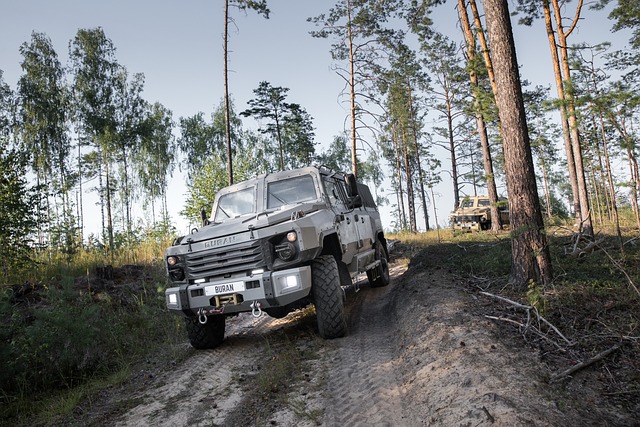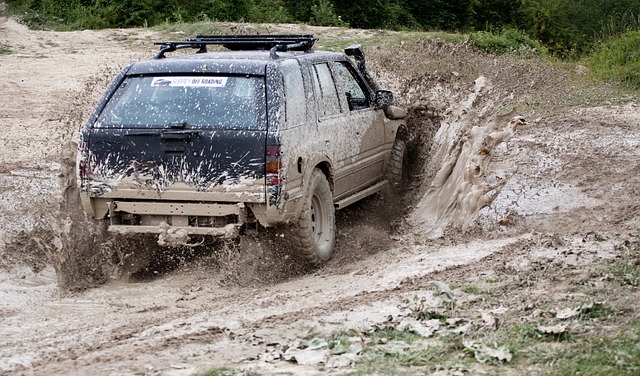Rock rails, crucial off-road components, protect vehicles from damage on rough terrain by safeguarding undercarries and tires. Paired with high-quality RGV wheels and tires, they significantly enhance safety and capability. These sturdy metal barriers absorb impact forces from rocks, minimizing damage to essential parts. RGV tires, engineered for off-road use, offer enhanced traction and durability in challenging conditions. Choosing the right rock rail type depends on terrain, vehicle compatibility, and budget, with installation and regular maintenance crucial for optimal protection. For RV owners exploring remote areas, rock rails provide added stability and act as a protective shield when combined with RGV wheels designed for superior grip.
“Rock rails, an essential safety feature for off-road vehicles, offer protection against rolling or striking obstacles. This article provides a comprehensive guide to understanding rock rails, focusing on their critical role in off-roading. We explore the significance of RGV (Robust Ground Vehicle) wheels and tires in enhancing rock rail systems’ performance. From various types and installation processes to safety benefits, this guide covers everything you need to know, ensuring you’re informed when choosing the ideal rock rail system for your vehicle.”
- Understanding Rock Rails: A Basic Overview
- The Role of RGV Wheels and Tires in Rock Rail Systems
- Types of Rock Rails: Advantages and Disadvantages
- Installation and Maintenance of Rock Rails
- Safety Features and Benefits of Rock Rails
- Choosing the Right Rock Rail System for Your Vehicle
Understanding Rock Rails: A Basic Overview

Rock rails, a critical component in off-road vehicles, serve as protective barriers that safeguard both the vehicle and its occupants during rough terrain navigation. These sturdy metal beams are designed to absorb and distribute the impact forces from striking rocks, reducing the risk of damage to the undercarriage and tires, which are especially vulnerable parts on any 4×4 vehicle.
When considering RGV wheels and tires for your off-road adventures, understanding the role of rock rails becomes essential. The robust construction of these rails complements the durability of high-quality wheels and tires, ensuring a safer journey over challenging landscapes. By investing in well-designed rock rails, off-road enthusiasts can enhance their vehicle’s capability while minimizing potential risks associated with unpredictable terrain.
The Role of RGV Wheels and Tires in Rock Rail Systems

Rock rail systems, designed to protect both vehicles and infrastructure from the destructive forces of off-road travel, rely heavily on specialized components like RGV wheels and tires. These aren’t your average automotive wheels; they’re built to withstand extreme terrain, providing enhanced traction and stability on rocky surfaces. RGV wheels, with their robust construction and durable materials, enable vehicles to navigate treacherous paths without succumbing to sharp rocks or uneven terrain.
Tires play an equally crucial role, offering superior grip and shock absorption. Engineered for off-road use, RGV tires feature aggressive tread patterns and specialized rubber compounds that resist punctures and provide reliable performance in dusty, muddy, or rocky conditions. This combination of robust wheels and specialized tires ensures rock rail systems deliver maximum protection, enabling vehicles to traverse challenging landscapes with increased safety and control.
Types of Rock Rails: Advantages and Disadvantages

Rock rails, an essential safety feature for off-road vehicles, come in various types designed to suit different terrains and driving conditions. One common category is the steel rock rail, known for its durability and strength. These are often preferred for rugged landscapes where the risk of hitting rocks, trees, or other obstacles is high. Steel rock rails offer excellent protection against damage to the vehicle’s underbody, a critical area for many 4×4 vehicles.
Another type is the aluminum rock rail, lighter and more corrosion-resistant than steel. These are popular choices for those seeking a balance between strength and weight savings, especially in regions with less extreme off-road conditions. Aluminum rails can be more susceptible to damage from sharp objects but offer better maneuverability and reduced fuel consumption due to their lower weight. When considering rock rails, factors like vehicle compatibility, terrain type, and budget play a significant role, just as the choice of tires, like those offered by RGV Wheels and Tires, can impact performance in various driving environments.
Installation and Maintenance of Rock Rails

Rock rails, a critical safety feature for off-road vehicles, require careful installation and regular maintenance. When installing rock rails using RGV wheels and tires, it’s essential to ensure proper alignment with the vehicle’s underbody. This involves meticulous measuring and adjustment to guarantee they provide robust protection without causing damage to the vehicle or compromising its performance.
Maintenance involves periodic checks for signs of wear and tear, particularly at points of contact with obstacles. Regular cleaning and inspection are crucial to prevent rust and corrosion. RGV wheels and tires, known for their durability, play a significant role in this process by offering superior traction and stability during challenging terrains, further enhancing the effectiveness of rock rails.
Safety Features and Benefits of Rock Rails

Rock rails, an integral part of off-road vehicles, offer a multitude of safety features that enhance the driving experience, especially on rugged terrain. These robust metal barriers are designed to prevent vehicles from rolling over or striking dangerous obstacles like rocks, trees, and steep drop-offs. By providing added stability, rock rails act as a protective shield for drivers and passengers, ensuring a safer journey through challenging landscapes.
For RV owners and adventurers exploring remote areas with unpredictable road conditions, rock rails are a wise investment. They complement the existing suspension system by providing extra support during high-speed turns or sudden maneuvers. Moreover, when paired with RGV wheels and tires, designed for superior grip and durability, rock rails offer an enhanced level of protection. This combination ensures that drivers can navigate through extreme off-road conditions with increased confidence and peace of mind.
Choosing the Right Rock Rail System for Your Vehicle

When selecting a rock rail system for your vehicle, it’s crucial to consider factors like terrain compatibility, durability, and weight capacity. Different systems cater to specific off-road needs, from lightweight trail rails for casual adventurers to robust, heavy-duty options for extreme off-roading. RGV wheels and tires play a pivotal role in this choice; their design and sizing must align with the rail system to ensure optimal performance and safety.
For instance, if you frequent rocky, uneven trails, opt for rock rails designed with robust materials that can withstand such challenges. Additionally, ensuring compatibility with your vehicle’s suspension lift and tire clearance is essential. RGV wheels, renowned for their quality, should be chosen to complement the rail system, providing a seamless fit that enhances both aesthetics and functionality during your off-road adventures.
Rock rails are an essential safety feature, particularly for off-road enthusiasts. By understanding the different types, their advantages, and the crucial role of RGV wheels and tires in these systems, you can make an informed decision when choosing a rock rail for your vehicle. Proper installation and regular maintenance ensure optimal performance and enhanced safety while navigating rugged terrain. Remember, the right rock rail system can be a game-changer for your off-road adventures.



